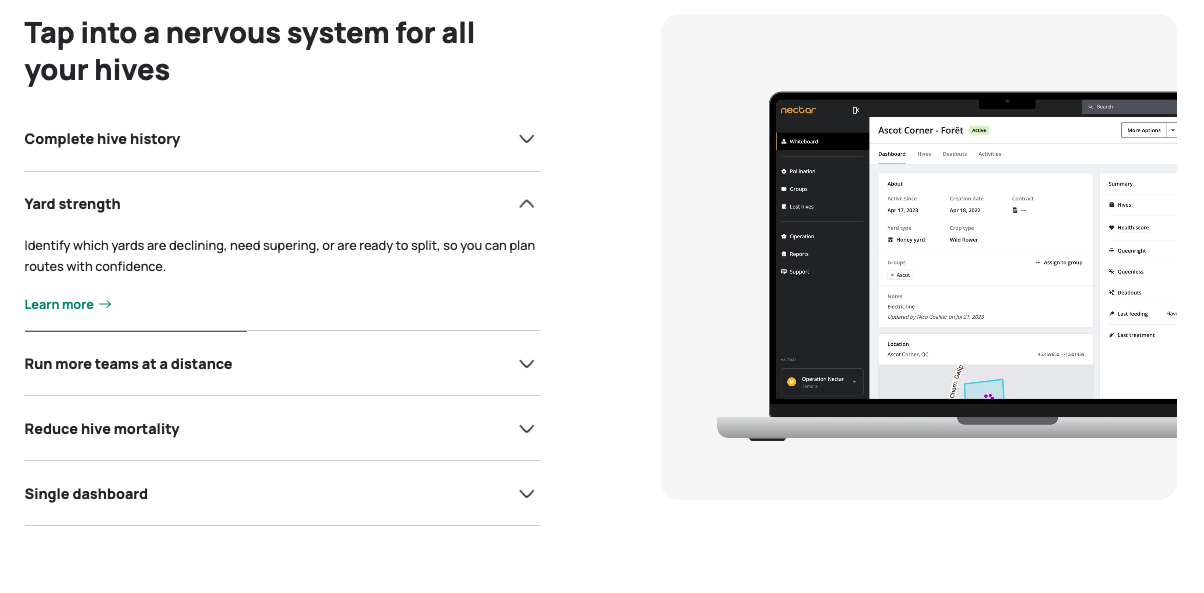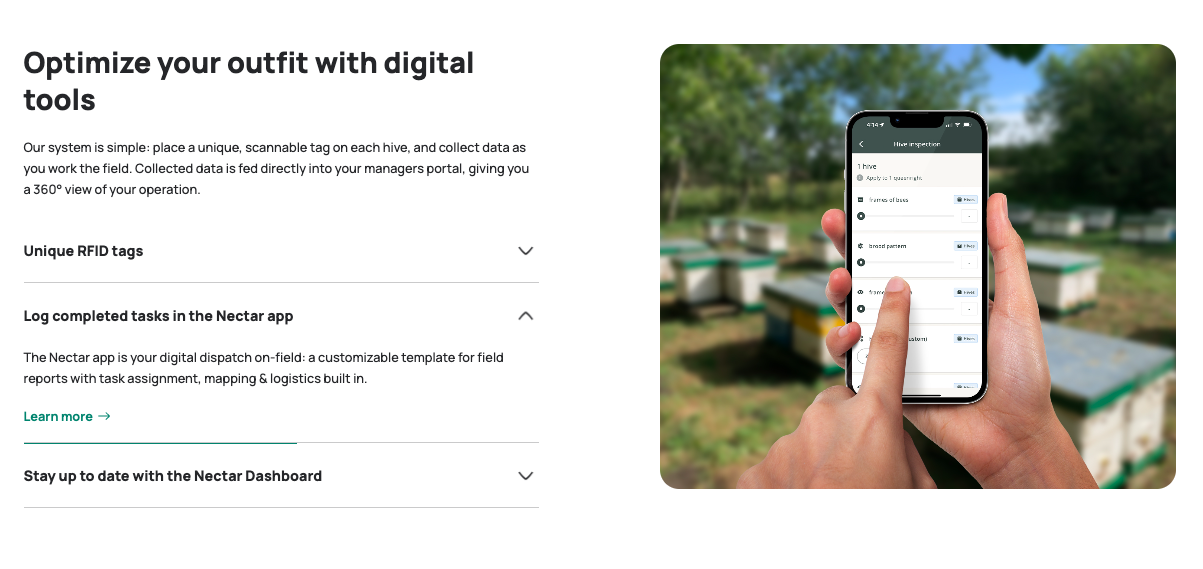Nectar Technologies
Nectar is Canada’s leading beekeeping technology company. With over 300,000 hives in its digital registry, it’s on a mission to secure the world's pollinated food supply by zeroing-in on the daily needs of commercial beekeepers.
After pivoting away from an earlier product, I helped Nectar develop a full-stack communications pack that started with interviews and customer research, then came together in a “theory of change” manifesto and a website overhaul. The initial research also formed the basis for subsequent mini-manifesto’s and customer case studies. All of this was then translated into content for social, email, thought leadership & fundraising.
Background
Since the mid-20th century, more than half of beekeepers' revenue has come from renting honeybees to crop growers for pollination. Each February, for example, more than 2 million beehives are shipped to California for almond pollination—with these services accounting for nearly 20% of an almond’s cost (roughly the same as irrigation).
Commercial beekeepers manage, on average, ~2,000 to 40,000 hives, making their outfits more like massive logistics networks, spread across the continent. Until recently, these networks have been managed primarily with notebooks and excel sheets, sometimes even rocks and sticks. But in the face of rapid environmental change—temperature fluctuations, mite infestation, pesticide use, etc.—honey bees are dying at far faster rates, and these systems are no longer good enough.
Nectar has built a three-part precision beekeeping tool exactly for this purpose: a scannable tag placed on each individual hive, a mobile app for workers that collects data from the field, and an analytics dashboard that uses machine learning to identify critical life, death, and environmental patterns. Combined, this system provides beekeepers with a 360 degree view of their hives—and gives Nectar the largest repository of honeybee data ever assembled. Using machine learning, this data is being used to create an industry-wide “hive mind,” built on the premise of honeybees as living biosensors.





